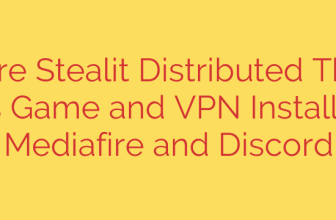
Harvard University Data Breach: What You Need to Know About the Clop Ransomware Attack
In a stark reminder of the sophisticated threats facing even the most prestigious institutions, Harvard University has been impacted by a major cybersecurity incident. The notorious Russian-linked ransomware group known as Clop has claimed responsibility for the attack, which exploited a critical vulnerability in a widely used file-transfer application.
This breach is not an isolated event but part of a massive, coordinated campaign that has affected hundreds of organizations worldwide, including government agencies, major corporations, and educational institutions. The attack highlights the cascading risks present in modern software supply chains and the relentless tactics of today’s cybercriminals.
The Target: A Critical Software Vulnerability
The cyberattack was not a direct assault on Harvard’s primary network infrastructure. Instead, the attackers targeted a zero-day vulnerability in MOVEit Transfer, a popular software tool used by organizations to securely send and receive large data files.
Clop discovered and exploited this previously unknown flaw before the software’s developer, Progress Software, could issue a patch. This gave the gang a crucial window to infiltrate the systems of any organization using the vulnerable software, allowing them to steal vast amounts of sensitive data undetected.
The Impact on Harvard and Affiliates
While Harvard University itself was affected, the breach also had a significant impact on its affiliate, Harvard Pilgrim Health Care (HPHC). The compromised data is highly sensitive and varies by the individuals affected, but reports confirm the theft of personal and protected information.
The stolen data may include:
- Full names and contact information
- Dates of birth
- Social Security numbers
- Financial account information and salary details
- Protected health information (PHI)
Clop’s typical method of operation is not to encrypt files and disrupt operations but to focus purely on data extortion. The group steals the data and then threatens to publish it on its dark web leak site unless a ransom is paid. This puts immense pressure on organizations to negotiate, fearing regulatory fines, lawsuits, and severe reputational damage.
Who is the Clop Ransomware Gang?
The Clop (sometimes written as “Cl0p”) ransomware gang is one of the world’s most prolific and dangerous cybercrime syndicates. Believed to be based in Russia, the group has been active for years, systematically evolving its tactics from traditional ransomware to large-scale data theft and extortion.
They are known for identifying and exploiting zero-day vulnerabilities in enterprise-grade software, allowing them to compromise hundreds of victims in a single campaign. Their previous campaigns targeting flaws in Accellion and GoAnywhere file-transfer tools followed a similar pattern, netting them hundreds of millions of dollars in ransom payments.
Actionable Security Tips: How to Protect Yourself
If you believe you may have been affected by this breach or any other, it is crucial to take immediate steps to protect your identity and finances. Attackers use stolen data to commit fraud, open new lines of credit, and launch targeted phishing campaigns.
Monitor Your Financial Accounts and Credit Reports: Keep a close eye on your bank and credit card statements for any unusual activity. You can request free annual credit reports from the major bureaus (Equifax, Experian, and TransUnion) to check for unauthorized accounts.
Consider a Credit Freeze: A credit freeze is one of the most effective ways to prevent identity theft. It restricts access to your credit report, making it difficult for criminals to open new accounts in your name. Freezing and unfreezing your credit is free of charge with all three major bureaus.
Enable Two-Factor Authentication (2FA): Secure all your important online accounts—especially email, banking, and social media—with 2FA. This adds a critical layer of security beyond just a password, requiring a second verification step from your phone or another device.
Be Vigilant Against Phishing Scams: Criminals often use data from a breach to create highly convincing phishing emails or text messages. Be suspicious of any unsolicited communication that asks for personal information or creates a sense of urgency. Never click on suspicious links or download unexpected attachments.
Use Strong, Unique Passwords: Avoid reusing passwords across multiple sites. Use a trusted password manager to generate and store complex, unique passwords for each of your accounts.
This attack on Harvard University serves as a powerful lesson in cybersecurity. It underscores that no organization is immune and that proactive defense, along with swift personal action following a breach, is essential in today’s digital landscape.
Source: https://securityaffairs.com/183282/cyber-crime/clop-ransomware-group-claims-the-hack-of-harvard-university.html








